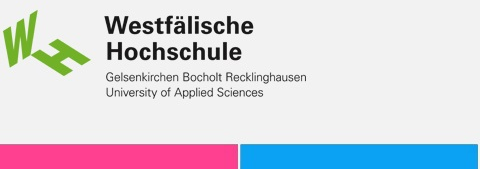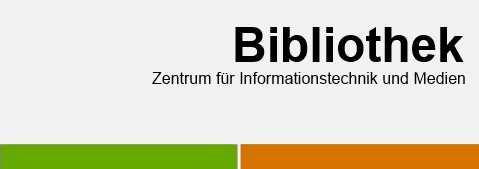Filtern
Erscheinungsjahr
Dokumenttyp
- Wissenschaftlicher Artikel (210)
- Konferenzveröffentlichung (210)
- Teil eines Buches (Kapitel) (31)
- Sonstiges (29)
- Video (14)
- Buch (Monographie) (13)
- Preprint (9)
- Dissertation (4)
- Arbeitspapier (4)
- Bericht (3)
Sprache
- Englisch (532) (entfernen)
Schlagworte
- Robotik (8)
- Flugkörper (7)
- UAV (7)
- Rettungsrobotik (5)
- Polymer-Elektrolytmembran-Brennstoffzelle (4)
- adhesion (4)
- Bionik (3)
- Erweiterte Realität <Informatik> (3)
- Gespenstschrecken (3)
- Haftorgan (3)
Institut
- Westfälisches Institut für Gesundheit (115)
- Institut für Internetsicherheit (56)
- Informatik und Kommunikation (51)
- Elektrotechnik und angewandte Naturwissenschaften (50)
- Wirtschaft und Informationstechnik Bocholt (46)
- Westfälisches Energieinstitut (42)
- Institut für biologische und chemische Informatik (37)
- Maschinenbau Bocholt (37)
- Institut Arbeit und Technik (15)
- Wirtschaftsingenieurwesen (15)
MFsim - An open Java all-in-one rich-client simulation environment for mesoscopic simulation
MFsim is an open Java all-in-one rich-client computing environment for mesoscopic simulation with Jdpd as its default simulation kernel for Molecular Fragment Dissipative Particle Dynamics (DPD). The environment integrates and supports the complete preparation-simulation-evaluation triad of a mesoscopic simulation task. Productive highlights are a SPICES molecular structure editor, a PDB-to-SPICES parser for particle-based peptide/protein representations, a support of polymer definitions, a compartment editor for complex simulation box start configurations, interactive and flexible simulation box views including analytics, simulation movie generation or animated diagrams. As an open project, MFsim enables customized extensions for different fields of research.
MFsim uses several open libraries (see MFSimVersionHistory.txt for details and references below) and is published as open source under the GNU General Public License version 3 (see LICENSE).
MFsim has been described in the scientific literature and used for DPD studies.
Jdpd - An open Java Simulation Kernel for Molecular Fragment Dissipative Particle Dynamics (DPD)
Jdpd is an open Java simulation kernel for Molecular Fragment Dissipative Particle Dynamics (DPD) with parallelizable force calculation, efficient caching options and fast property calculations. It is characterized by an interface and factory-pattern driven design for simple code changes and may help to avoid problems of polyglot programming. Detailed input/output communication, parallelization and process control as well as internal logging capabilities for debugging purposes are supported. The kernel may be utilized in different simulation environments ranging from flexible scripting solutions up to fully integrated “all-in-one” simulation systems like MFsim.
Since Jdpd version 1.6.1.0 Jdpd is available in a (basic) double-precision version and a (derived) single-precision version (= JdpdSP) for all numerical calculations, where the single precision version needs about half the memory of the double precision version.
Jdpd uses the Apache Commons Math and Apache Commons RNG libraries and is published as open source under the GNU General Public License version 3. This repository comprises the Java bytecode libraries (including the Apache Commons Math and RNG libraries), the Javadoc HTML documentation and the Netbeans source code packages including Unit tests.
Jdpd has been described in the scientific literature (the final manuscript 2018 - van den Broek - Jdpd - Final Manucsript.pdf is added to the repository) and used for DPD studies (see references below).
See text file JdpdVersionHistory.txt for a version history with more detailed information.
Stereo Camera Setup for 360° Digital Image Correlation to Reveal Smart Structures of Hakea Fruits
(2024)
About forty years after its first application, digital image correlation (DIC) has become an established method for measuring surface displacements and deformations of objects under stress. To date, DIC has been used in a variety of in vitro and in vivo studies to biomechanically characterise biological samples in order to reveal biomimetic principles. However, when surfaces of samples strongly deform or twist, they cannot be thoroughly traced. To overcome this challenge, different DIC setups have been developed to provide additional sensor perspectives and, thus, capture larger parts of an object’s surface. Herein, we discuss current solutions for this multi-perspective DIC, and we present our own approach to a 360 DIC system based on a single stereo-camera setup. Using this setup, we are able to characterise the desiccation-driven opening mechanism of two woody Hakea fruits over their entire surfaces. Both the breaking mechanism and the actuation of the two valves in predominantly dead plant material are models for smart materials. Based on these results, an evaluation of the setup for 360 DIC regarding its use in deducing biomimetic principles is given. Furthermore, we propose a way to improve and apply the method for future measurements.
An automated pipeline for comprehensive calculation of intermolecular interaction energies based on molecular force-fields using the Tinker molecular modelling package is presented. Starting with non-optimized chemically intuitive monomer structures, the pipeline allows the approximation of global minimum energy monomers and dimers, configuration sampling for various monomer-monomer distances, estimation of coordination numbers by molecular dynamics simulations, and the evaluation of differential pair interaction energies. The latter are used to derive Flory-Huggins parameters and isotropic particle-particle repulsions for Dissipative Particle Dynamics (DPD). The computational results for force fields MM3, MMFF94, OPLSAA and AMOEBA09 are analyzed with Density Functional Theory (DFT) calculations and DPD simulations for a mixture of the non-ionic polyoxyethylene alkyl ether surfactant C10E4 with water to demonstrate the usefulness of the approach.
n-type silicon modules
(2023)
The photovoltaic industry is facing an exponential growth in the recent years fostered by a dramatic decrease in installation prices. This cost reduction is achieved by means of several mechanisms. First, because of the optimization of the design and installation process of current PV projects, and second, by the optimization, in terms of performance, in the manufacturing techniques and material combinations within the modules, which also has an impact on both, the installation process, and the levelized cost of electricity (LCOE).
One popular trend is to increase the power delivered by photovoltaic modules, either by using larger wafer sizes or by combining more cells within the module unit. This solution means a significant increase in the size of these devices, but it implies an optimization in the design of photovoltaic plants. This results in an installation cost reduction which turns into a decrease in the LCOE.
However, this solution does not represent a breakthrough in addressing the real challenge of the technology which affects the module requirements. The innovation efforts must be focused on improving the modules capability to produce energy without enlarging the harvesting area. This challenge can be faced by approaching some of the module characteristics which are summarized in this chapter.
This paper reveals various approaches undertaken over more than two decades of teaching undergraduate programming classes at different Higher Education Institutions, in order to improve student activation and participation in class and consequently teaching and learning effectiveness.
While new technologies and the ubiquity of smartphones and internet access has brought new tools to the classroom and opened new didactic approaches, lessons learned from this personal long-term study show that neither technology itself nor any single new and often hyped didactic approach ensured sustained improvement of student activation. Rather it needs an integrated yet open approach towards a participative learning space supported but not created by new tools, technology and innovative teaching methods.
This paper presents a pragmatic approach for stepwise introduction of peer assessment elements in undergraduate programming classes, discusses some lessons learned so far and directions for further work. Students are invited to challenge their peers with their own programming exercises to be submitted through Moodle and evaluated by other students according to a predefined rubric and supervised by teaching assistants. Preliminary results show an increased activation and motivation of students leading to a better performance in the final programming exams.
In this work a mathematical approach to calculate solar panel temperature based on measured irradiance, temperature and wind speed is applied. With the calculated module temperature, the electrical solar module characteristics is determined. A program developed in MatLab App Designer allows to import measurement data from a weather station and calculates the module temperature based on the mathematical NOCT and stationary approach with a time step between the measurements of 5 minutes. Three commercially available solar panels with different cell and interconnection technologies are used for the verification of the established models. The results show a strong correlation between the measured and by the stationary model predicted module temperature with a coefficient of determination R2 close to 1 and a root mean square deviation (RMSE) of ≤ 2.5 K for a time period of three months. Based on the predicted temperature, measured irradiance in module plane and specific module information the program models the electrical data as time series in 5-minute steps. Predicted to measured power for a time period of three months shows a linear correlation with an R2 of 0.99 and a mean absolute error (MAE) of 3.5, 2.7 and 4.8 for module ID 1, 2 and 3. The calculated energy (exemplarily for module ID 2) based on the measured, calculated by the NOCT and stationary model for this time period is 118.4 kWh, resp. 116.7 kWh and 117.8 kWh. This is equivalent to an uncertainty of 1.4% for the NOCT and 0.5% for the stationary model.
Advanced Determination of Temperature Coefficients of Photovoltaic Modules by Field Measurements
(2023)
In this work data from outdoor measurements, acquired over the course of up to three years on commercially available solar panels, is used to determine the temperature coefficients and compare these to the information as stated by the producer in the data sheets. A program developed in MatLab App Designer allows to import the electrical and ambient measurement data. Filter algorithms for solar irradiance narrow the irradiance level down to ~1000 W/m2 before linear regression methods are applied to obtain the temperature coefficients. A repeatability investigation proves the accuracy of the determined temperature coefficients which are in good agreement to the supplier specification if the specified values for power are not larger than -0.3%/K. Further optimization is achieved by applying wind filter techniques and days with clear sky condition. With the big (measurement) data on hand it was possible to determine the change of the temperature coefficients for varying irradiance. As stated in literature we see an increase of the temperature coefficient of voltage and a decline for the temperature coefficient of power with increasing irradiance.
As a rule, an experiment carried out at school or in undergraduate study
courses is rather simple and not very informative. However, when the experiments
are to be performed using modern methods, they are often abstract and
difficult to understand. Here, we describe a quick and simple experiment,
namely the enzymatic characterization of ptyalin (human salivary amylase)
using a starch degradation assay. With the experimental setup presented here,
enzyme parameters, such as pH optimum, temperature optimum, chloride
dependence, and sensitivity to certain chemicals can be easily determined. This
experiment can serve as a good model for enzyme characterization in general,
as modern methods usually follow the same principle: determination of the
activity of the enzyme under different conditions. As different alleles occur in
humans, a random selection of test subjects will be quite different with regard
to ptyalin activities. Therefore, when the students measure their own ptyalin
activity, significant differences will emerge, and this will give them an idea of
the genetic diversity in human populations. The evaluation has shown that the
pupils have gained a solid understanding of the topic through this experiment.


